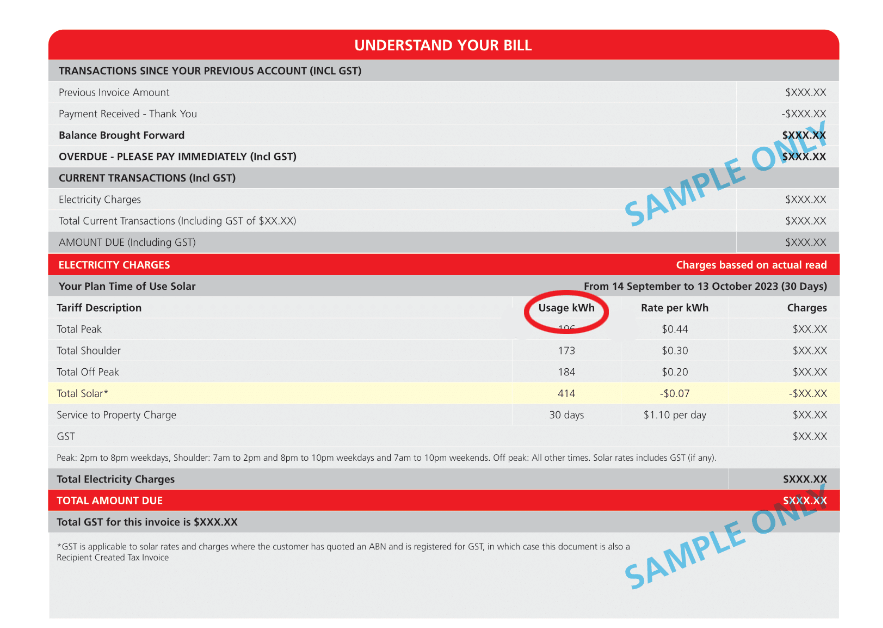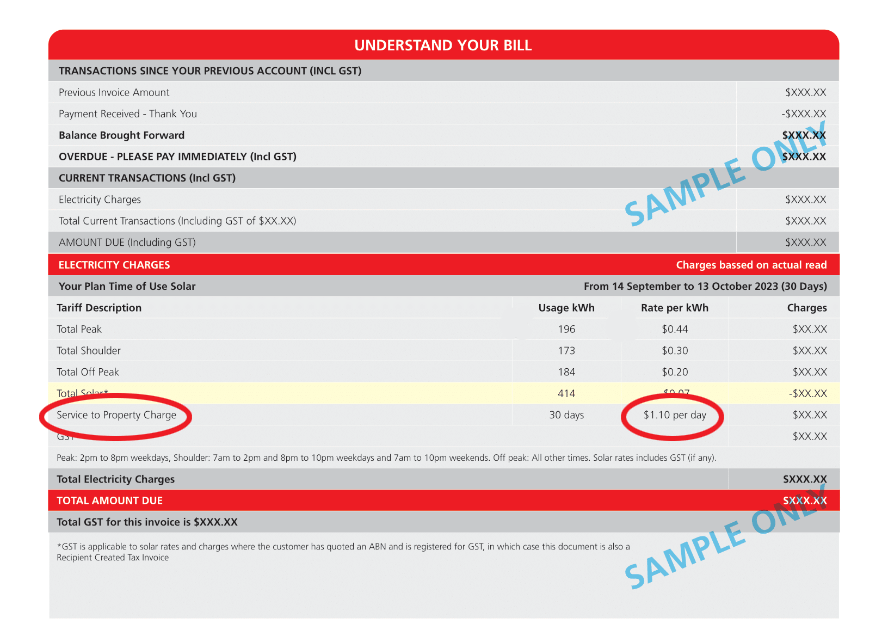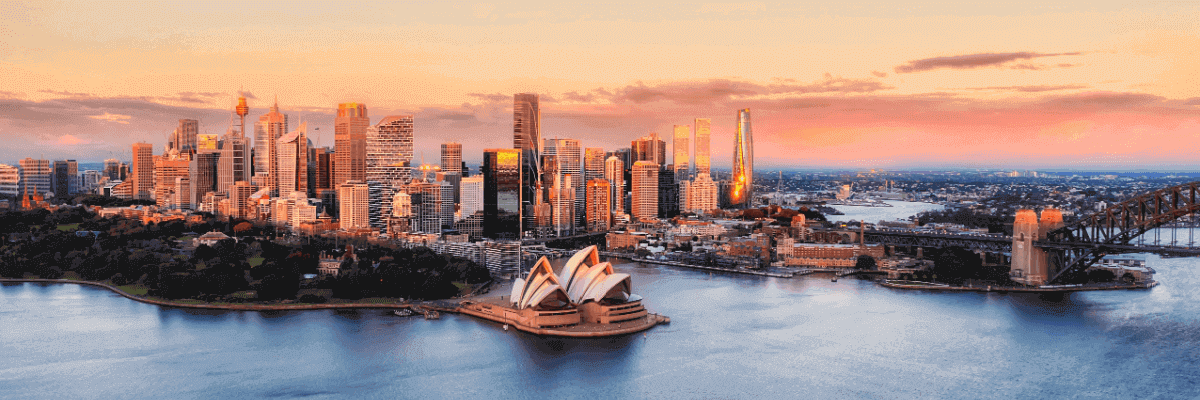The Default Market Offer and retailer pricing in south-east QLD, NSW and SA will change from July 1, 2025.
We’re working to ensure the latest product information is displayed as soon as it’s made available to us by providers.
Please confirm plan information with the provider before making a decision.
KEY POINTS
- A tariff refers to the pricing structure for electricity you consume.
- In NSW, there are four types of electricity tariffs: single rate, time of use, controlled load tariffs and feed-in tariffs.
- Homes with solar panels are eligible to be on a feed-in tariff, rewarding them with credits for every kWh of energy exported back to the grid.
Compare cheap electricity plans in New South Wales
Here are some sponsored deals from the retailers on our database that include a link to the retailer’s website for further details. These are products from referral partners†. These costs are based on the Ausgrid energy network in Sydney but prices may vary depending on your circumstances. This comparison assumes general energy usage of 3900kWh/year for a residential customer on a single rate tariff. Please use our comparison tool for a specific comparison in your area and to see other products in our database that may be available. Our database may not cover all deals in your area. As always, check all details of any plan directly with the retailer before making a purchase decision.
|
12% Less than reference price |
$1,491 Price/year (estimated) |
Go to Site |
Here are some of the cheapest published deals from the retailers on our database that include a link to the retailer’s website for further details. These are products from referral partners†. These costs are based on the Ausgrid network in Sydney but prices may vary depending on your circumstances. This comparison assumes general energy usage of 3900kWh/year for a residential customer on a single rate tariff. Please use our comparison tool for a specific comparison in your area and to see other products in our database that may be available. Our database may not cover all deals in your area. As always, check all details of any plan directly with the retailer before making a purchase decision.
What is an electricity tariff?
A ‘tariff’ refers to the pricing structure under which you are charged for electricity. You pay a different rate depending on how much electricity you use, or your usage rate varies with the time of day – these are both examples of an electricity tariff. Some commonly available tariffs in NSW include:
Single/peak rate tariffs in NSW
Under a single rate tariff in NSW, a flat usage rate is charged for ‘blocks’ of electricity consumed. This could either be a limited amount per day, or a set amount per quarter. Some retailers include a second block of electricity usage for which a different usage rate is charged. If electricity usage exceeds these blocks, a third rate will be charged for all additional usage. Residential single rate tariffs vary considerably across retailers, anywhere from 19c/kWh to as much as 30c/kWh. Often, but not always, the rates you pay will decline with each block of electricity you consume which ensures customers are not ‘punished’ for using more kWhs.
This single rate is actually NSW’s most basic electricity tariff for households and small businesses. To help illustrate, below are two examples of ‘single rate’ tariffs you might encounter.
Quarterly blocks
← Mobile/tablet users, scroll sideways to view full table →
| First 4000 kWh usage per quarter | 28 cents per kWh |
| Next 4000 kWh usage per quarter | 27 cents per kWh |
| Remaining usage per quarter | 24 cents per kWh |
Daily blocks
← Mobile/tablet users, scroll sideways to view full table →
| First 11 kWh usage per day | 26 cents per kWh |
| Next 8 kWh usage per day | 25 cents per kWh |
| Remaining usage per quarter | 22 cents per kWh |
Examples of typical single rate tariffs in NSW.
While ‘single rate’ is the most universal term for this tariff in NSW, it will often appear on bills and energy price factsheets as a ‘flat’, ‘domestic’, ‘peak’, ‘continuous’ or ‘block’ rate. This tariff is available to most NSW residential and business customers regardless of the type of meter they have. A single rate tariff is a safe choice for anyone who is unsure of what tariff is best suited to their needs.
Single rate tariff costs
Below is an example of what NSW households can expect to pay if they only have a single rate tariff.
Here are some of the cheapest published deals from the retailers on our database that include a link to the retailer’s website for further details. These are products from referral partners†. These costs are based on the Ausgrid network in Sydney but prices may vary depending on your circumstances. This comparison assumes general energy usage of 3900kWh/year for a residential customer on a single rate tariff. Please use our comparison tool for a specific comparison in your area and to see other products in our database that may be available. Our database may not cover all deals in your area. As always, check all details of any plan directly with the retailer before making a purchase decision. The next three tabs feature products exclusively from AGL, EnergyAustralia and Origin.
Here are the AGL Energy plans on our database for NSW. These are products from a referral partner†. These costs are based on the Ausgrid network in Sydney but prices may vary depending on your circumstances. This comparison assumes general energy usage of 3900kWh/year for a residential customer on a single rate tariff. Please use our comparison tool for a specific comparison in your area and to see other products in our database that may be available. Our database may not cover all deals in your area. As always, check all details of any plan directly with the retailer before making a purchase decision.
Here are the EnergyAustralia plans on our database for NSW. These are products from a referral partner†. These costs are based on the Ausgrid network in Sydney but prices may vary depending on your circumstances. This comparison assumes general energy usage of 3900kWh/year for a residential customer on a single rate tariff. Please use our comparison tool for a specific comparison in your area and to see other products in our database that may be available. Our database may not cover all deals in your area. As always, check all details of any plan directly with the retailer before making a purchase decision.
Here are the Origin Energy plans on our database for NSW. These are products from a referral partner†. These costs are based on the Ausgrid network in Sydney but prices may vary depending on your circumstances. This comparison assumes general energy usage of 3900kWh/year for a residential customer on a single rate tariff. Please use our comparison tool for a specific comparison in your area and to see other products in our database that may be available. Our database may not cover all deals in your area. As always, check all details of any plan directly with the retailer before making a purchase decision.
Time of use tariffs in NSW
Customers on a ‘time of use’ electricity tariff are charged different usage rates depending on when power is used. Three time bands loosely reflect energy demand in any given period – peak, off-peak and shoulder.
- Peak: Electricity is in peak demand during morning and early evening hours. Electricity is most expensive at these times.
- Off-peak: Demand for electricity is low late at night. Electricity is cheapest in this period.
- Shoulder: This is a period of mild demand between peak and off-peak. Intermediate prices are charged during these hours.
Peak, off-peak and shoulder electricity times and rates in NSW
Time of use tariff hours vary depending on which energy distribution network you live in.
← Mobile/tablet users, scroll sideways to view full table →
| Distributor | Hours | Expected residential rate |
|---|---|---|
| Ausgrid | ||
| Peak | 3pm – 9pm weekdays | 22c/kWh – 52c/kWh |
| Off-peak | 10pm – 7am everyday | 11c/kWh – 17c/kWh |
| Shoulder | All other times | 17c/kWh – 25c/kWh |
| Essential Energy | ||
| Peak | 7am – 9am and 5pm – 8pm weekdays | 28c/kWh – 40c/kWh |
| Off-peak | Weekends and 10pm – 7am weekdays | 16c/kWh – 22c/kWh |
| Shoulder | 9am – 5pm and 8pm – 10pm weekdays | 28c/kWh – 33c/kWh |
| Endeavour Energy | ||
| Peak | 1pm – 8pm weekdays | 30c/kWh – 40c/kWh |
| Off-peak | 10pm – 7am everyday | 14c/kWh – 20c/kWh |
| Shoulder | All other times | 22c/kWh – 26c/kWh |
General guide only.
Your meter must be able to take multiple readings in order to be eligible for a time of use tariff. Smart meters and some analogue meters are compatible with a time of use tariff. Time of use tariffs are great if you stay up late or are home during the day. If you’re a 9-5 worker who mostly uses electricity in the early evening, then this tariff might cost you more.
Customers on the Ausgrid network also have access to the ‘transitional time of use tariff’. This tariff is similar to the regular time of use tariff, though the rates across different time periods are evened out slightly to help customers that are new to time of use pricing.
Controlled load tariffs in NSW
A ‘controlled load’ is a specialty tariff designed for large, high-energy usage appliances. Your nominated appliance will be metered separately to the rest of the property and charged at a controlled load rate, which is usually lower than standard usage rates. In exchange, electricity supply to appliances on a controlled load will be limited to off-peak hours, generally around the morning and early evening.
Because electricity won’t be supplied during busy periods, a controlled load tariff is unsuitable for appliances that regularly or constantly need electricity. The most common applications of controlled loads are for electric storage hot water systems, pool pumps and heat slabs.
Two types of controlled load tariffs exist in NSW: Controlled Load 1 and Controlled Load 2. Charges and prices vary across networks.
- Controlled Load 1: Electricity is supplied for 5 to 9 hours overnight on weekdays, with possible extra hours on weekends. Controlled Load 1 has cheaper rates than Controlled Load 2.
- Controlled Load 2: Electricity is supplied for 10 to 18 hours overnight on weekdays and all hours on weekends. In exchange for the extended supply hours of electricity, rates on Controlled Load 2 are a little higher.
Approximate controlled load (CL) charges in NSW
← Mobile/tablet users, scroll sideways to view full table →
| Network | Usage | |
|---|---|---|
| CL 1 | CL 2 | |
| Ausgrid | 18.2c/kWh | 19.3c/kWh |
| Endeavour Energy | 21.0c/kWh | 22.7c/kWh |
| Essential Energy | 18.6c/kWh | 20.6c/kWh |
Source: www.canstarblue.com.au – 30/07/2024. Average electricity usage rates are based on non-solar only plans on Canstar’s database for each respective rate type (single rate and controlled load), available for annual usages based on the reference usage amounts for each distributor for controlled load plans: NSW, VIC, QLD, and SA per AER, VIC per Victorian Default Offer, ACT per ICRC, TAS per the median usage in the Office of the Tasmanian Regulator’s report, Typical Electricity Customers in Tasmania 2022. Controlled load supply charges based on plans that have a supply charge for controlled loads. In Queensland, the tariffs are more commonly referred to as tariff 11 (single rate), tariff 31 (controlled load 1), and tariff 33 (controlled load 2). In Tasmania, the tariffs are more commonly referred to as tariff 31 (single rate), tariff 41 (controlled load).
Your energy distributor will select which hours it supplies electricity to appliances on a controlled load. For Controlled Load 1 these hours will usually be between 10pm and 7am weekdays. For Controlled Load 2, electricity will generally be supplied at all hours except for 2pm to 8pm on weekdays.
Only nominated appliances on a dedicated circuit will benefit from a controlled load tariff. All other electricity usage will be charged at either a single use or time of use tariffs. Controlled loads are a great option and will usually help save money, so long as you’re comfortable with limiting the use of certain appliances.
Feed-in tariffs in NSW
When solar panels produce electricity but no one is home to use it, this energy is exported to the local energy grid. In exchange, the property will receive a small credit for each kWh of electricity that their solar panels shared with the grid. This is called a feed-in tariff, sometimes abbreviated by retailers as FiT.
In New South Wales, a feed-in tariff will usually be around 6c per kWh of exported solar power. Some retailers may offer higher feed-in tariffs of 10c/kWh or more on some of their plans.
For more information on feed-in tariffs, check out Canstar Blue’s feed-in tariff comparisons.
Small business electricity tariffs
Businesses in NSW have access to the previously mentioned tariffs in most situations, albeit at slightly different rates. While different conditions might apply and some retailers may not offer certain tariffs to select businesses, the tariffs are structurally identical to what’s offered to residential customers.
Electricity rates NSW
Now that you are aware of the electricity tariffs in NSW, you can compare the general usage rates and daily supply rates across New South Wales. These electricity rates are based on residential customers who live in Sydney on the Ausgrid network. Canstar Blue lists the cheapest published deals available on our database from each retailer for single rate tariffs only.
← Mobile/tablet users, scroll sideways to view full table →
| Electricity provider | Electricity plan | General usage rate | Daily supply charge | |
|---|---|---|---|---|
| AGL | Residential Smart Saver | 33.11¢/kWh | 92.46¢/day | |
| Alinta Energy | HomeSaver Plus – Single Rate | 32.17¢/kWh | 97.42¢/day | |
| Amber Electric | Standing Offer – Single Rate | 42.40¢/kWh | 88.03¢/kWh | |
| CovaU Energy | Freedom | 35.48¢/kWh | 88.02¢/day | |
| Diamond Energy | Everyday Renewable Saver | 38.32¢/kWh | 71.50¢/day | |
| Dodo | Residential Standing | 32.89¢/kWh | 119.22¢/day | |
| EnergyAustralia | Flexi Plan | 36.94¢/kWh | 101.20¢/day | |
| Energy Locals | Online Member | 27.00¢/kWh | 71.00¢/day | |
| Engie | Engie Perks | 36.94¢/kWh | 100.97¢/day | |
| GloBird Energy | Resi Standing Offer | 35.75¢/kWh | 113.30¢/day | |
| Kogan Energy | Kogan Energy with Free First | 30.62¢/kWh | 108.46¢/day | |
| Momentum Energy | Nothing Fancy Electricity | 27.06¢/kWh | 124.08¢/day | |
| Nectr | 100% Clean | 35.75¢/kWh | 113.85¢/day | |
| Origin Energy | Go Variable | 31.66¢/kWh | 83.13¢/day | |
| OVO Energy | The One Plan | 30.14¢/kWh | 82.50¢/day | |
| Pacific Blue | Blue Home | 36.52¢/kWh | 104.50¢/day | |
| Powershop | Switch Saver | 34.45¢/kWh | 122.02¢/day | |
| Red Energy | Living Energy Saver | 31.62¢/kWh | 80.03¢/day | |
| Sumo | Sumo Spark | 29.70¢/kWh | 73.15¢/day | |
| Tango Energy | Home Select | 36.52¢/kWh | 104.50¢/day | |
| 1st Energy | 1st Saver | 34.65¢/kWh | 122.10¢/day | |
| Basic Plan Information Documents | ||||
Rates and products subject to change. Accurate as of June 2025.
Compare NSW electricity prices
It’s important to know what energy rates you’re paying for usage and supply, but working out what these rates translate to in terms of overall power costs can be tricky. That’s why Canstar Blue does the calculations for you, so you can see some of the cheapest deals in your area. Based on current rates the table below lists a selection of great deals across each of NSW’s three distribution zones. Click on the relevant tab for your area to see pricing.
Here are some of the cheapest published deals from the retailers on our database that include a link to the retailer’s website for further details. These are products from referral partners†. These costs are based on the Ausgrid network in Sydney but prices may vary depending on your circumstances. This comparison assumes general energy usage of 3900kWh/year for a residential customer on a single rate tariff. Please use our comparison tool for a specific comparison in your area. Our database may not cover all deals in your area. As always, check all details of any plan directly with the retailer before making a purchase decision.
Here are some of the cheapest published deals from the retailers on our database that include a link to the retailer’s website for further details. These are products from referral partners†. These costs are based on the Endeavour Energy network in Wollongong but prices may vary depending on your circumstances. This comparison assumes general energy usage of 4900kWh/year for a residential customer on a single rate tariff. Please use our comparison tool for a specific comparison in your area. Our database may not cover all deals in your area. As always, check all details of any plan directly with the retailer before making a purchase decision.
Here are some of the cheapest published deals from the retailers on our database that include a link to the retailer’s website for further details. These are products from referral partners†. These costs are based on the Essential Energy network in Coffs Harbour but prices may vary depending on your circumstances. This comparison assumes general energy usage of 4600kWh/year for a residential customer on a single rate tariff. Please use our comparison tool for a specific comparison in your area. Our database may not cover all deals in your area. As always, check all details of any plan directly with the retailer before making a purchase decision.
Electricity usage costs (per kWh) in NSW
Energy takes up a large portion of household budgets and is an ongoing cost many of us begrudgingly pay every quarter or so. But how much does electricity cost per kilowatt hour (kWh) in NSW? At the time of publication, residential customers in NSW can expect to pay around 34 cents per kWh. However, cheaper energy usage rates may become available. While these costs refer to the prices charged for consuming power, electricity usage rates only make up one part of energy bills.
Where are usage rates located on a bill?
Usage rates are normally found on the section of your bill that outlines each specific fee and charge. In this example, the usage charge is referred to as ‘Any Time Usage’.

Electricity supply costs in NSW
Otherwise known as an electricity supply charge or daily supply fee, these costs refer to the rates customers pay just for being connected to the grid. Aside from billing homes for using power, energy retailers will also charge customers for supplying their property with electricity, usually charged as a daily cost (cents per day). Supply costs can vary considerably but expect to pay between 90c and $1 a day in NSW.
Where are supply rates located on a bill?
The rate you’re charged for electricity supply is typically found in the breakdown of costs and fees section of your bill. Keep in mind that supply charges may be under a different name depending on the retailer.

How to find a deal with cheap energy rates in NSW
One of the many great things about living in NSW is there are so many choices when it comes to choosing an energy provider. Finding a deal with cheap electricity rates is much easier with Canstar Blue’s free comparison tool. With your postcode you can start comparing a range of plans, filtering product details that are important to you, including the rates you’ll pay on specific deals.
Original reporting by Jared Mullane
Image Source: Taras Vyshnya/Shutterstock.com



Share this article